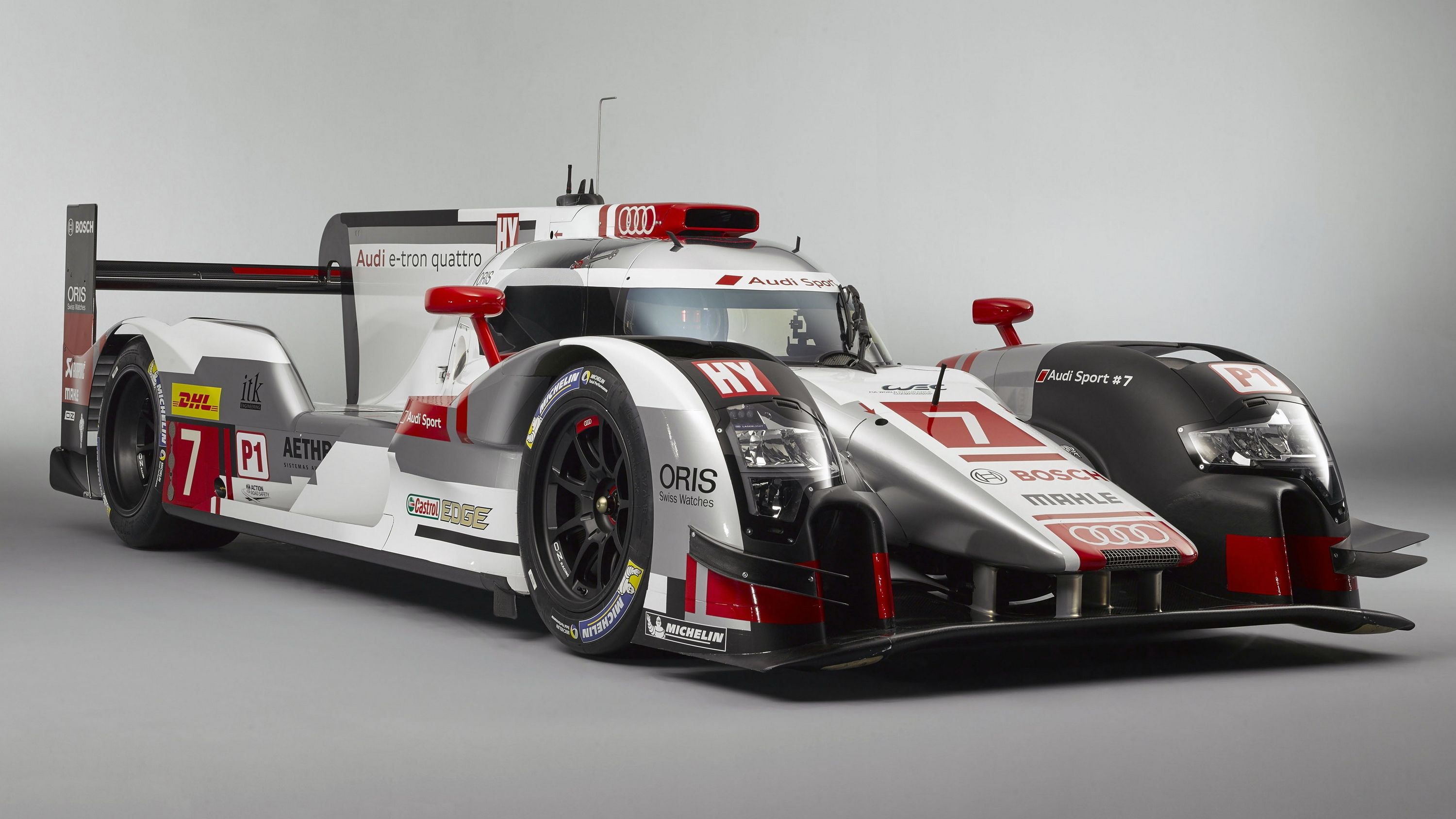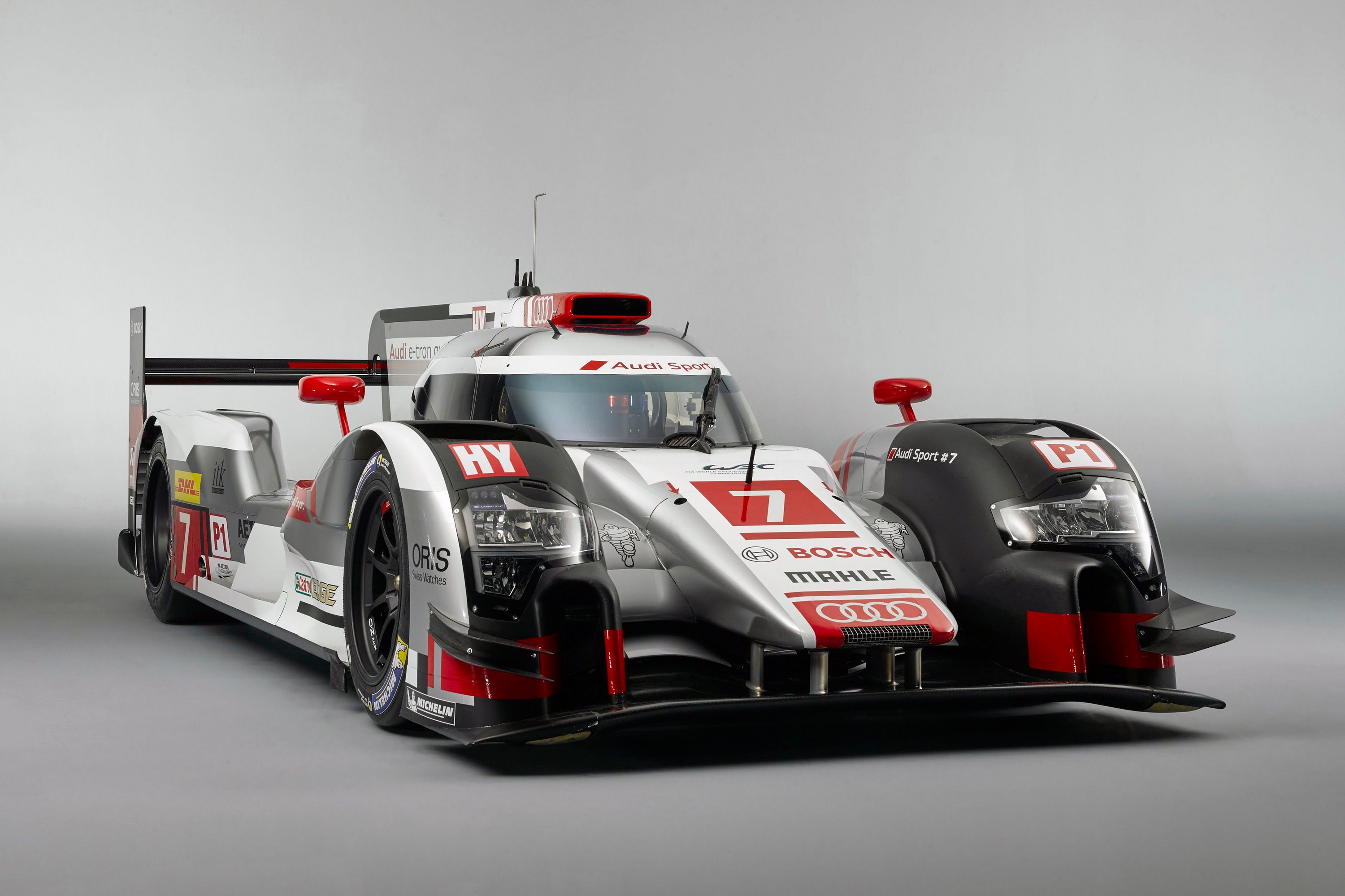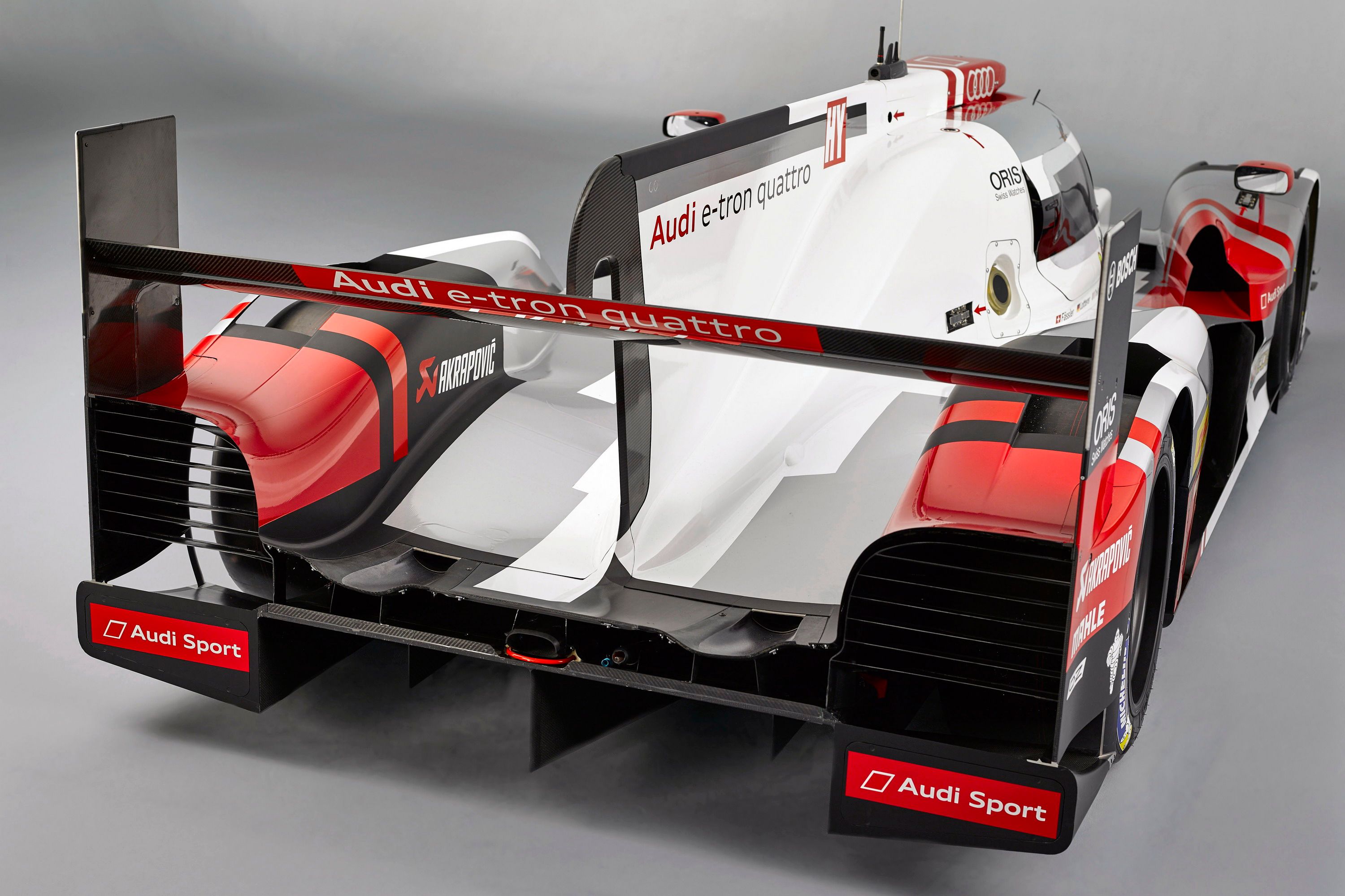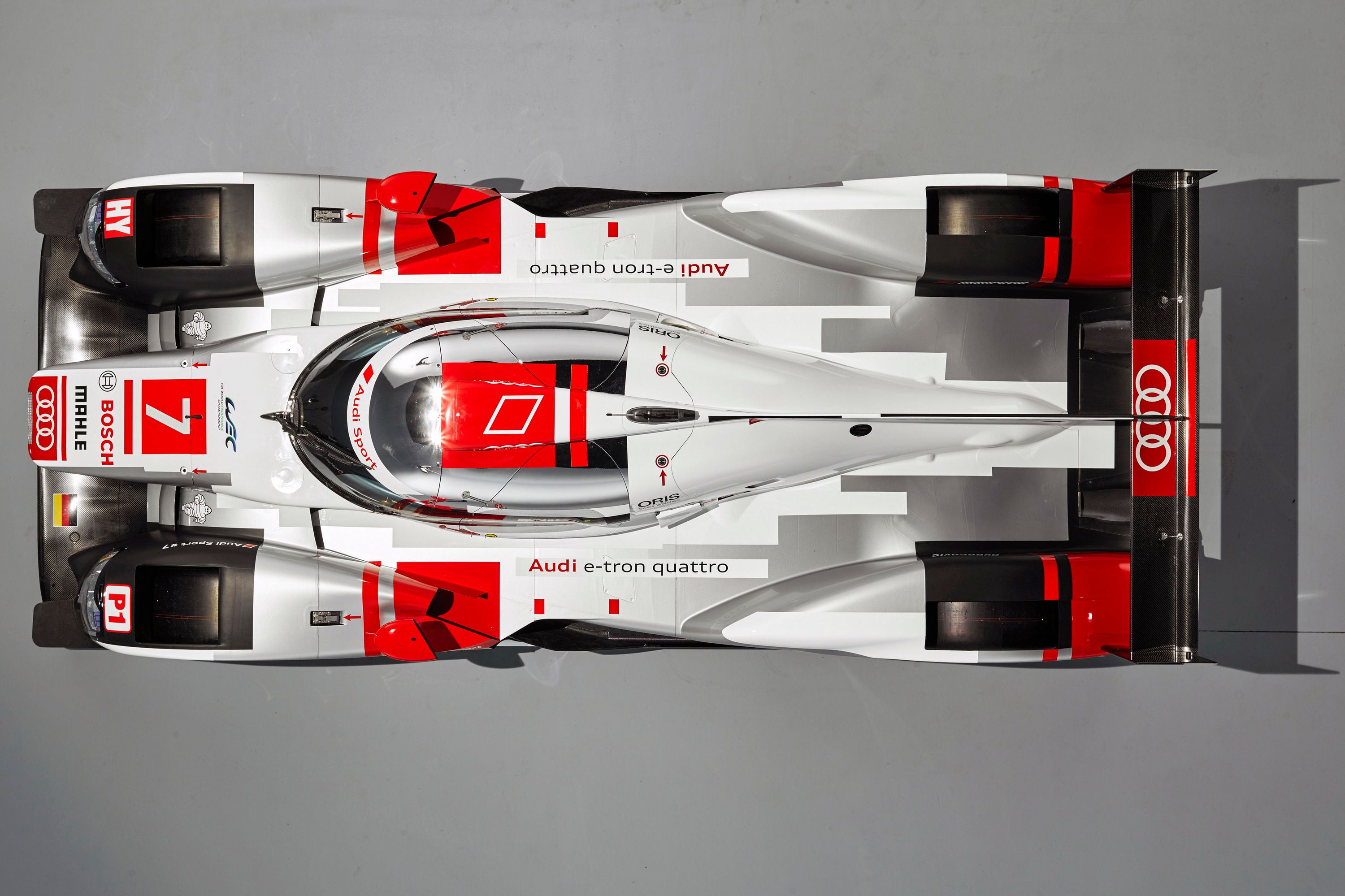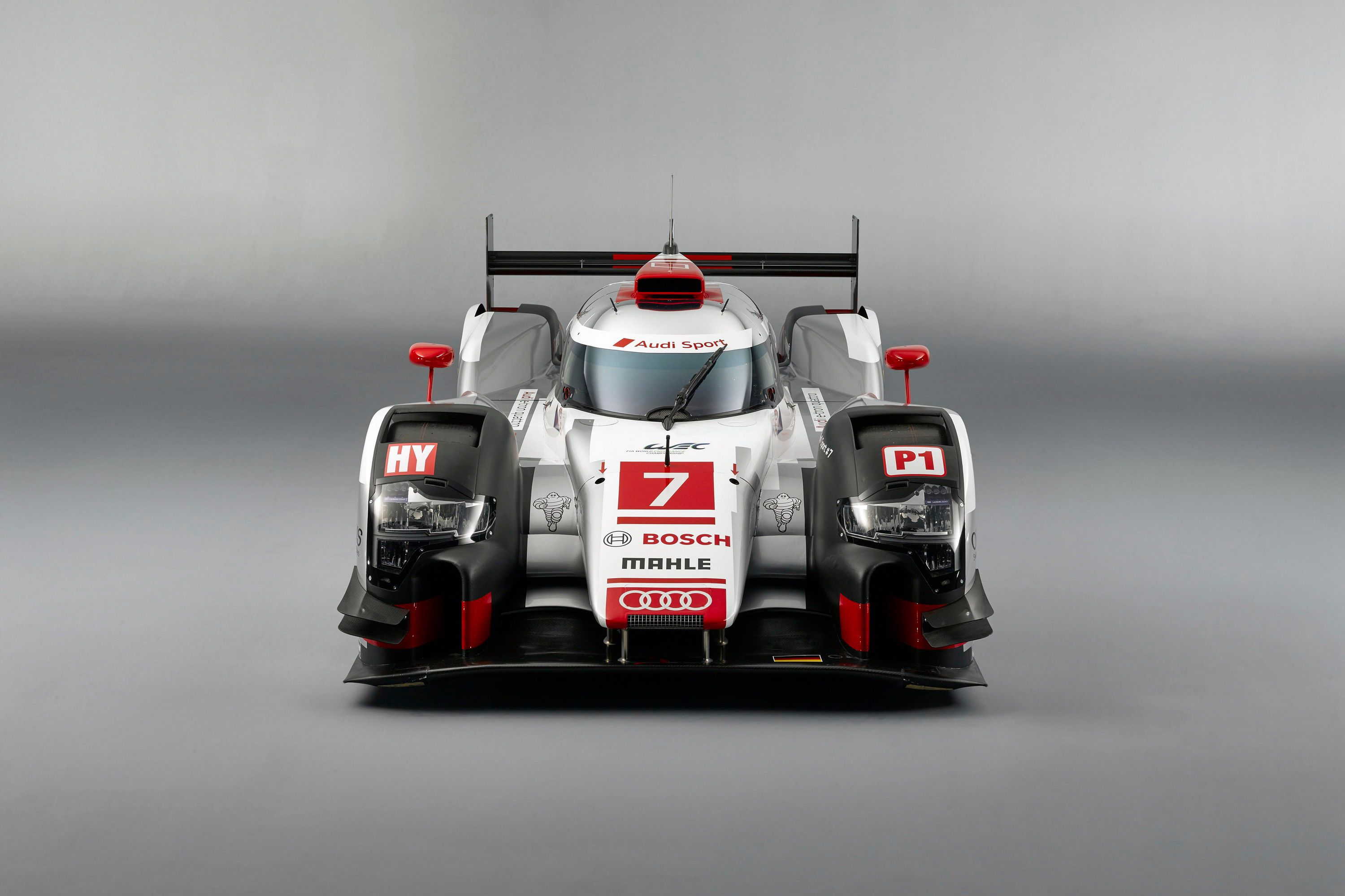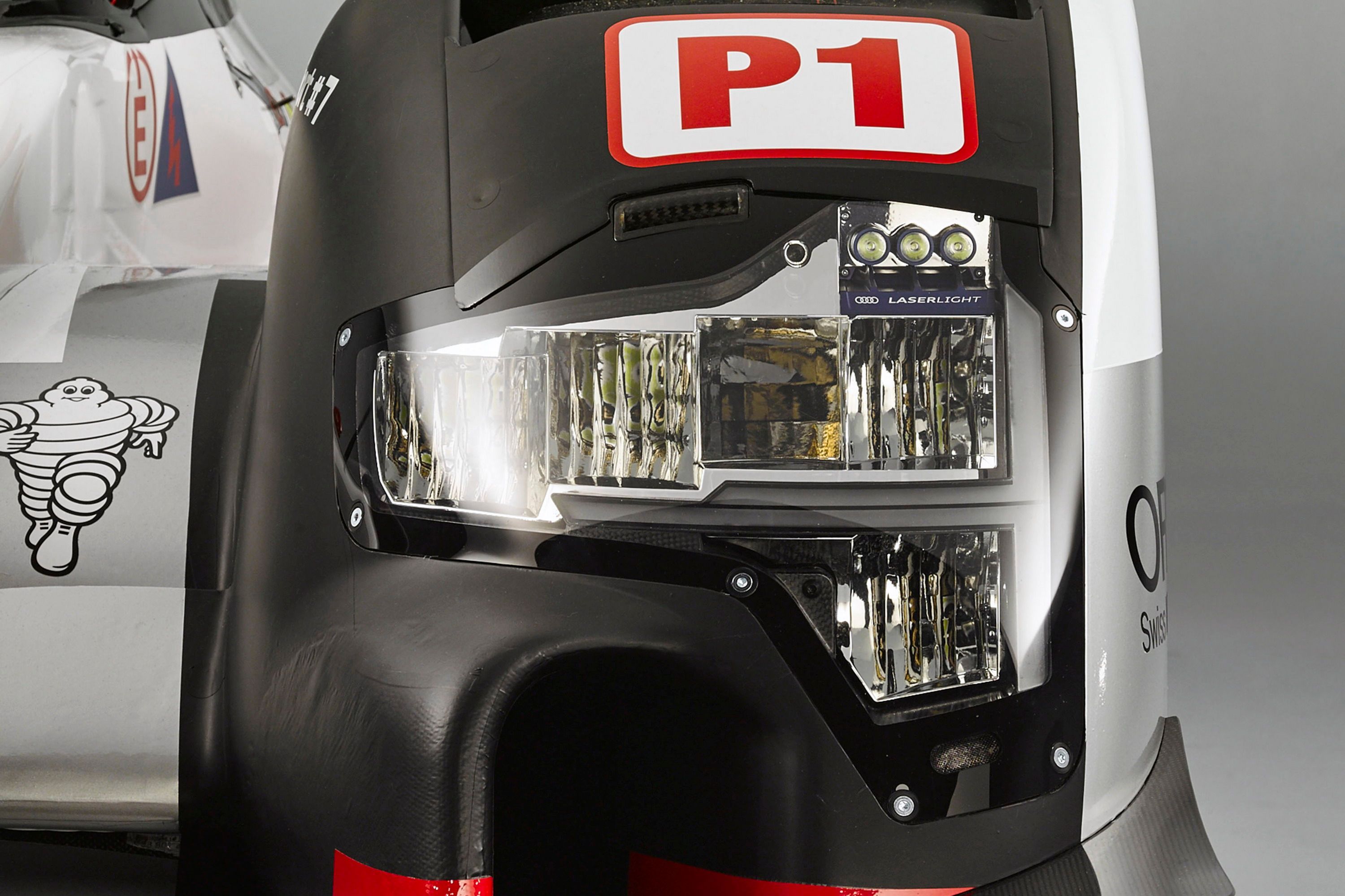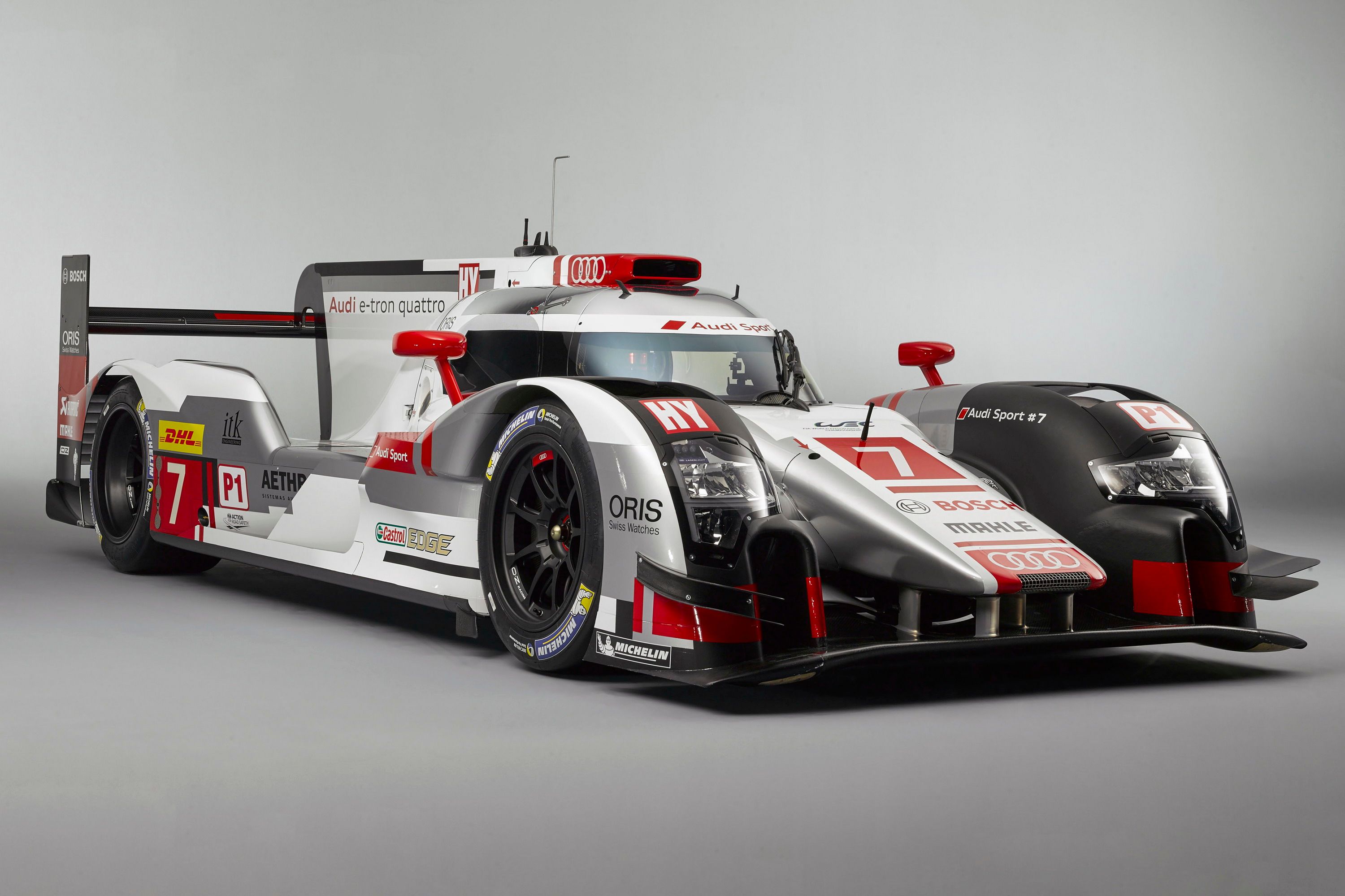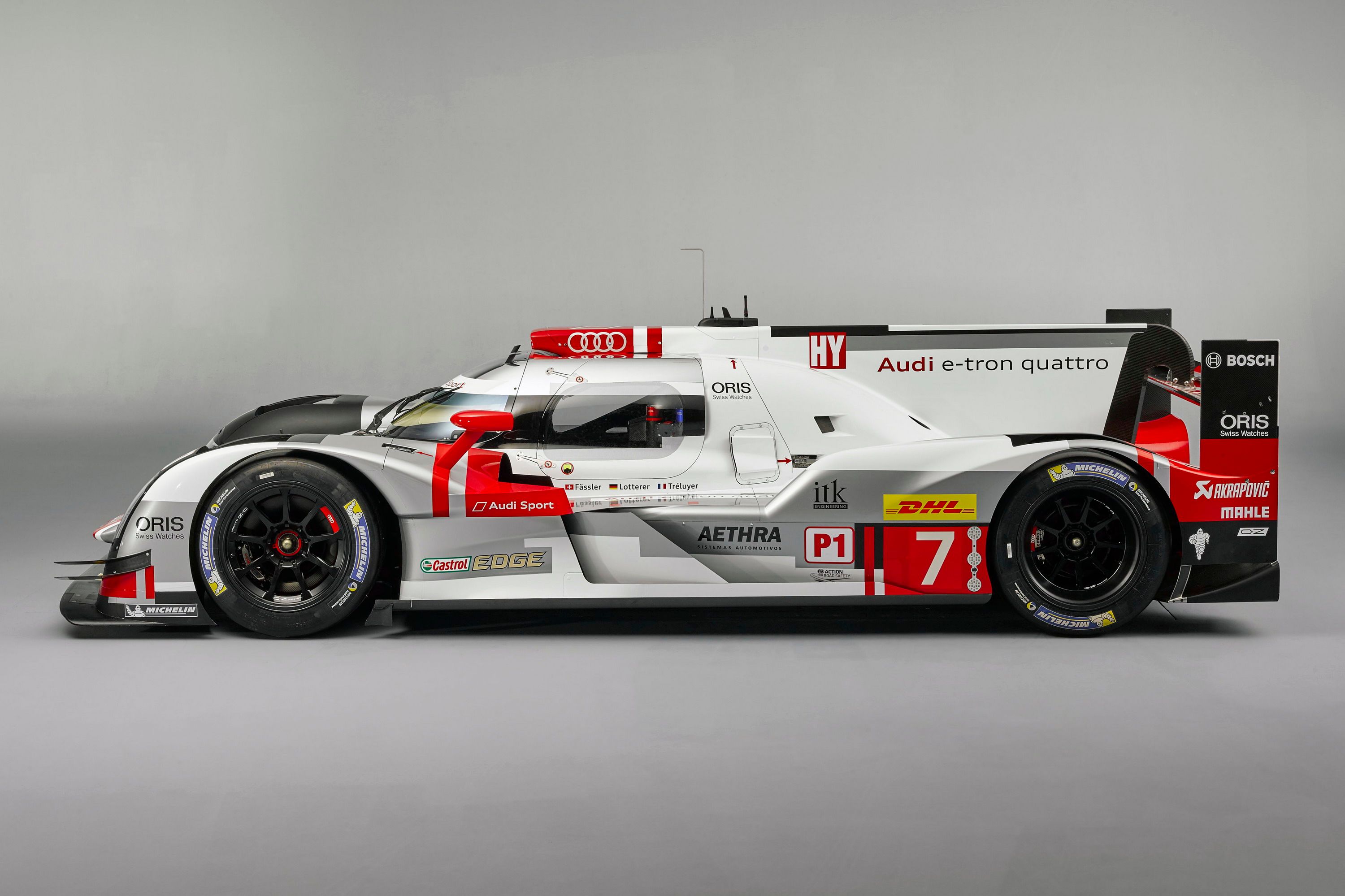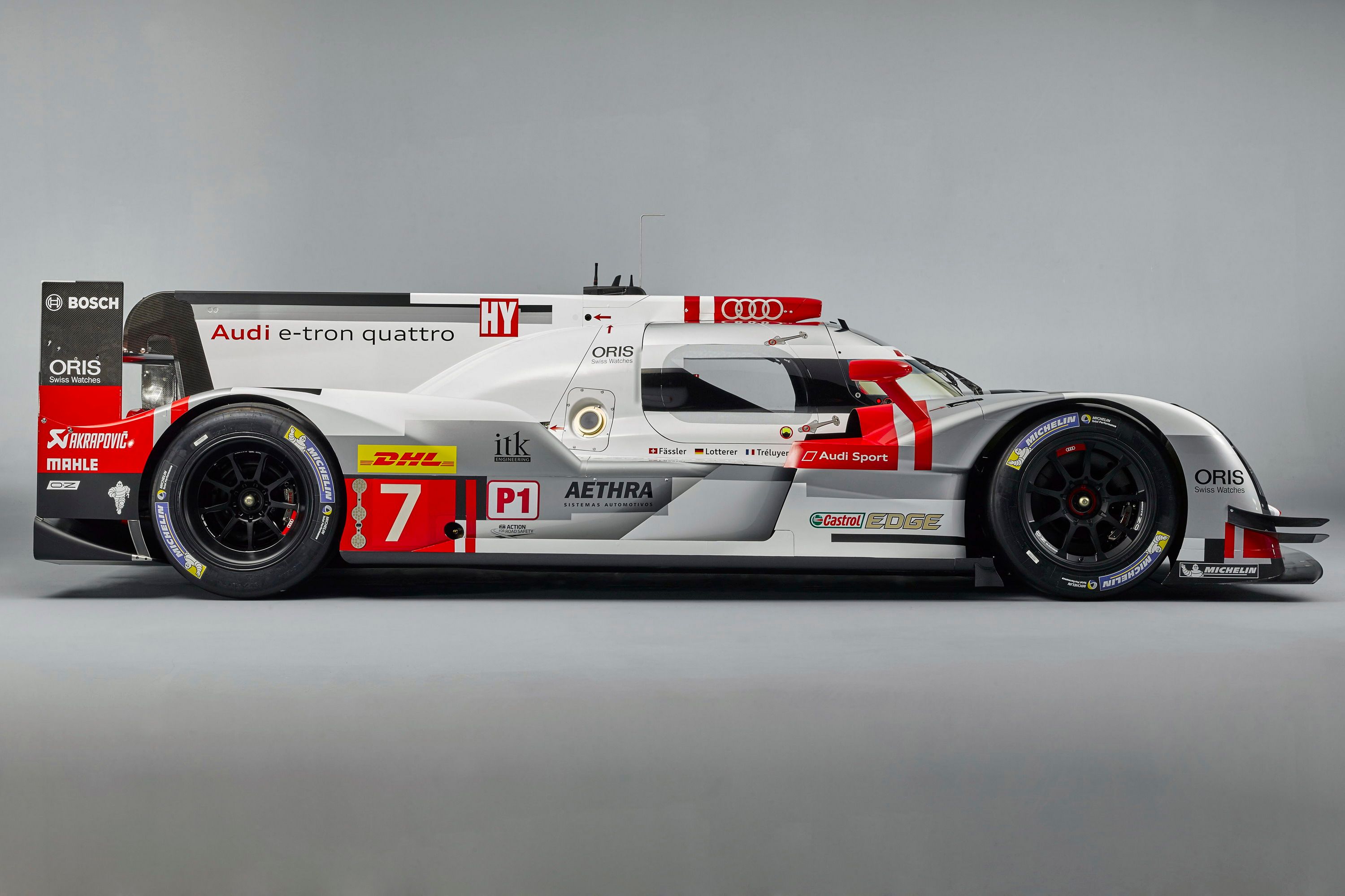If someone asked me to name Audi's->ke14 most successful race cars 20 years ago, my answer would've been simple: the Auto Unions of the 1930s and the Quattro rally car. Come 2015 and things are a bit more complicated, as Audi has become a dominant force in the endurance racing scene since 1999. It all started with the R8R and the R8 LMP, before Audi switched to diesel power with the R10 TDI and the R15 TDI. In 2011, the Germans introduced the R18, also motivated by a turbodiesel engine, but this time around paired to an electric motor. The R18 alone won 15 major endurance events in 2014,including four 24 Hours of Le Mans races, taking Audi's Le Mans tally to 13 and making it the second-most successful manufacturer after Porsche.->ke1 With the 2015 World Endurance Championship right around the corner, Audi is launching a revised version of the R18 that aims to take the nameplate's success to a new level.
As with each revision, the R18 received a reworked body with improved aerodynamics, a more powerful hybrid drivetrain, a less thirsty diesel powerplant, and new technology inside and out. The 2015 R18's official track debut is set for April 12th at the 6 Hours of Silverstone race, but, until then, let's have a closer look at what Audi had to share about its latest endurance track car.
Continue reading to learn more about the 2015 Audi R18 e-tron Quattro.
2015 Audi R18 e-tron quattro
- Make: Array
- Model: 2015 Audi R18 e-tron quattro
- Engine/Motor: V6
- Horsepower: 558
Exterior
Although it may still resemble its predecessors, the new R18 e-tron quattro had every inch of its carbon-fiber body reshaped for reduced aerodynamic drag and better engine and hybrid system cooling, as well optimizing the crash structure. Up front, the most noticeable changes are the larger air inlets in the front wheel arches, the reshaped splitter and the all-new headlamps.
The firm says the headlamps have been redesigned around the new aerodynamic elements and equipped with both Matrix LED and Audi Laserlight technologies for the utmost visibility during those long night-time stints at the 24 Hours of Le Mans.
The front wings are also new, as are the side pods and the more-compact engine cover. Changes are less noticeable around back, but the new race car does feature a slightly revised diffuser, repositioned exhaust pipes, and more louvers in the fenders. The body panels are bolted onto the last year's monocoque chassis.
As usual, Audi is preparing two body versions for the various tracks on the FIA World Endurance Championship calendar, which means a longtail R18 will be launched sometime before the 2015 24 Hours of Le Mans.
Interior
As always, there are no details about inside the R18 e-tron quattro and no photos to gaze at, but I assume the 2015 cockpit will be very similar to last year's racer. I expect the interior to consists of a button-cluttered dashboard with no instrument cluster and a multifunction steering wheel packed with switches, knobs and controls. A small display provides the driver with vital information such as speed and rpm.
Holding the driver in place during those long endurance stints is a bolstered racing seat with a six-point Sabelt harness. Most surfaces inside the cockpit are either exposed carbon-fiber or wrapped in cloth and Alcantara. There's nothing fancy about the interior of the R18 e-tron quattro, which is specifically designed to provide the best driver environment for endurance racing
Drivetrain
The R18's drivetrain is a carryover from last year's car, meaning there's a V-6 turbodiesel spinning the rear wheels and a pair of electric motors connected to the front wheels, but Audi made certain updates that increased its output as well as the energy recovered during braking.
The upgraded 4.0-liter, V-6 diesel delivers 550 horsepower, a significant improvement over last year's unit, while also returning greater fuel efficiency. Audi doesn't mention the amount of fuel the new R18 saves, but stressed that the car needs to use 2.5 percent less diesel fuel per lap than in 2014. The electric motors are also more powerful, now sending 268 horses to the front axle -- a 40-horsepower improvement.
Audi engineers also redesigned the car's energy recovery system. The Germans estimate they have doubled the amount of energy from two to four megajoules per race lap at Le Mans. As a result, Audi has increased the capacity of the energy storage system as well. The flywheel energy storage system mounted in the cockpit can store up to 700 kilojoules of energy, which is about 17 percent more than in 2014.
Competition
Toyota TS040 Hybrid
Having won the 2014 World Endurance Championship for manufacturers, Toyota is the automaker to beat this season. The TS040 Hybrid, which will receive an update for 2015, won five of eight races last year, taking the manufacturer's title by a comfortable margin. However, Toyota failed to stop Audi dominance at Le Mans, placing third at the end of the 24-hour endurance race.
Unlike the R18 e-tron, the TS040 uses a gasoline-hybrid drivetrain that consists of a 3.7-liter V-8 engine sending 513 horsepower to the rear wheels and two electric motors, one for each axle. Find out more about it in our full review here.
Porsche 919 Hybrid
The 919 Hybrid debuted in 2014 to mark Porsche's return to the 24 Hours of Le Mans after after a 15-year hiatus. Unfortunately for Stuttgart, the 919 Hybrid had too many issues to win in France, finishing the race 11th. It also finished last in the WEC manufacturer's championship behind Toyota and Audi, scoring only one win in the final race of the season. With an updated version underway, 2015 should be an improvement.
Unlike its main competitors, Porsche is counting on a 2.0-liter V-4 engine and two separate energy recovery systems. The V-4 seems like an odd choice for a manufacturer that built its tradition by racing flat-6 and flat-12 mills, but the four-banger has proven itself competitive throughout 2014. As with most hybrids, the front axle is powered by an electric motor that uses regenerative braking. The second unit, however, utilizes thermal energy generated by the exhaust and powers a generator. Read more about it in our review here.
Nissan GT-R LM Nismo
The GT-R LM Nismo is new for 2015 and an oddball for the LMP1 class. The result of a radical approach, the Nissan is not only a FWD car, but it also had its engine mounted between the front wheels, making it the most unusual car to race at Le Mans since the DeltaWing. Driving the front wheels is a 3.0-liter, twin-turbo V-6 engine mated to a five-speed sequential gearbox and a hydraulic limited-slip differential. The mill cranks out 550 horsepower, but the electric motor backing it churns an additional 700 horses.
Although Nissan planned to use the GT-R LM Nismo throughout the 2015 WEC season, it seems the Japanese will skip the first race to focus on readying the race car for the 24 Hours of Le Mans. That's where Nissan plans to end the dominance of the mid-engine, RWD layout. Read more about it here.
Conclusion
Granted, the 2015 R18 e-tron quattro has pretty big shoes to fill. Its predecessors have won the 24 Hours of Le Mans four times in a row and another 11 WEC races on top of taking two manufacturer's championships home in 2012 and 2013. A new Le Mans success and a new manufacturer's title in the World Endurance Championship are a must for the R18, but it remains to be seen whether the updated race car will be able to hold its own against the Toyota and Porsche LMP1 hybrids.

